
What is a Gliding Joint? (with pictures)
a ligament that reinforces a complex set of intertarsal (gliding) synovial joints; it supports the longitudinal arch of the foot; also known as: short plantar ligament. plantar calcaneonavicular ligament. a ligament that connects the sustentaculum tali with the plantar surface of the navicular bone.
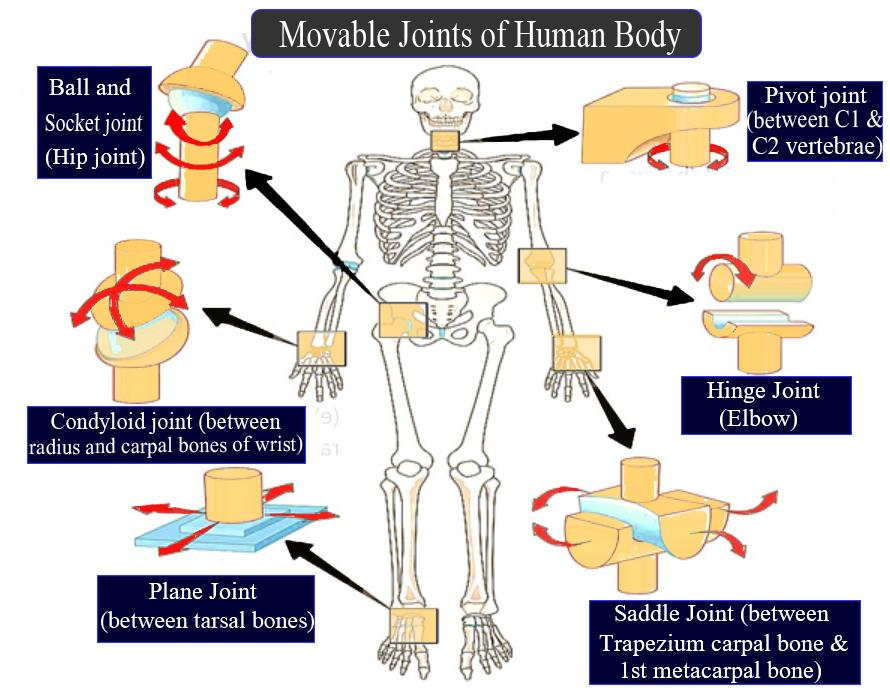
Explain any five movable joints with examples.
A plane joint (arthrodial joint, gliding joint, plane articulation) is a synovial joint which, under physiological conditions, allows only gliding movement. Plane joints permit sliding movements in the plane of articular surfaces. The opposed surfaces of the bones are flat or almost flat, with movement limited by their tight joint capsules.
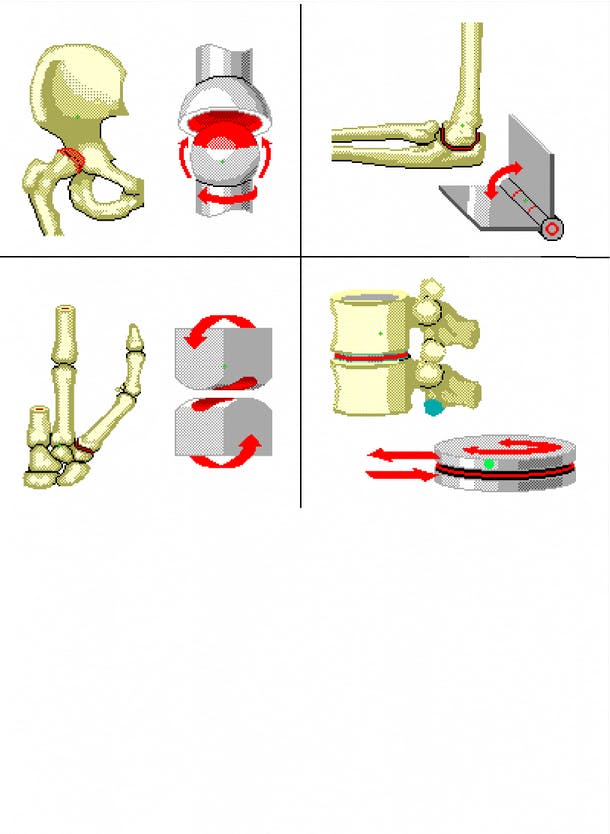
Gliding Joints Anatomy, Function & Vertebral Support
The glenohumeral joint is a ball-and-socket joint formed between the articulation of the rounded head of the humerus (the upper arm bone) and the cup-like depression of the scapula, called the glenoid fossa.mycontentbreak The glenoid fossa forms a very shallow socket, so the muscles, ligaments, and cartilage of the shoulder joint reinforce its.
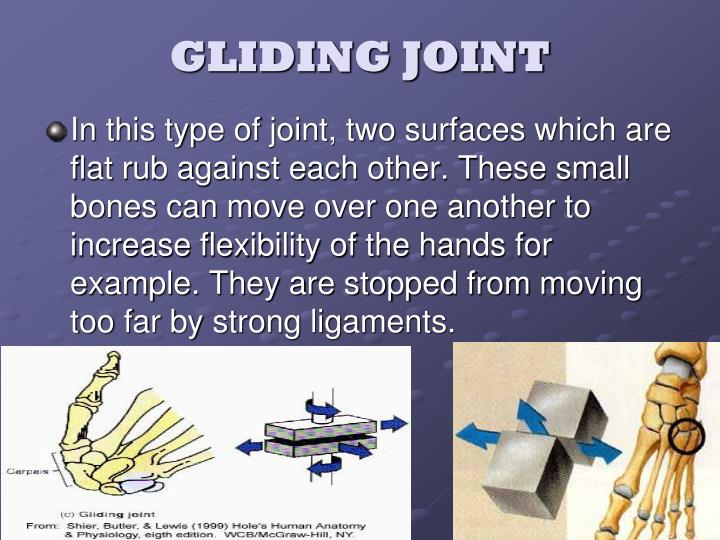
PPT “MOVING THROUGH EXERCISE SCIENCE” PowerPoint Presentation ID4848912
Figure 38.12.1 38.12. 1: Types of synovial joints: The six types of synovial joints allow the body to move in a variety of ways. (a) Pivot joints allow for rotation around an axis, such as between the first and second cervical vertebrae, which allows for side-to-side rotation of the head. (b) The hinge joint of the elbow works like a door hinge.
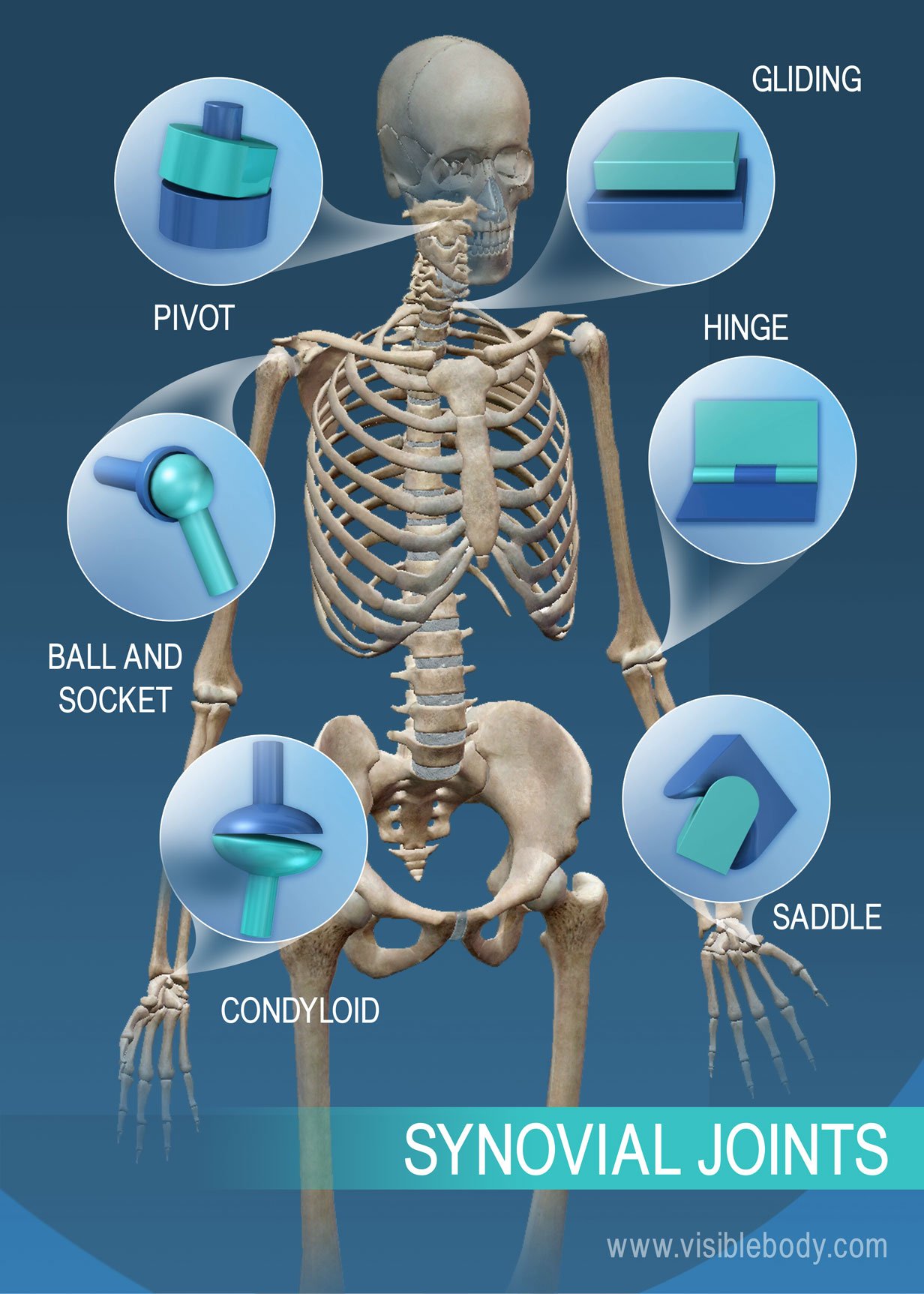
Joints and Ligaments Learn Skeleton Anatomy
Flexi Says: A gliding joint, also known as a plane joint, is a joint that allows one bone to slide over another, such as between the carpels of the fingers. Gliding joints are also found in your wrists and ankles. Discuss further with Flexi.
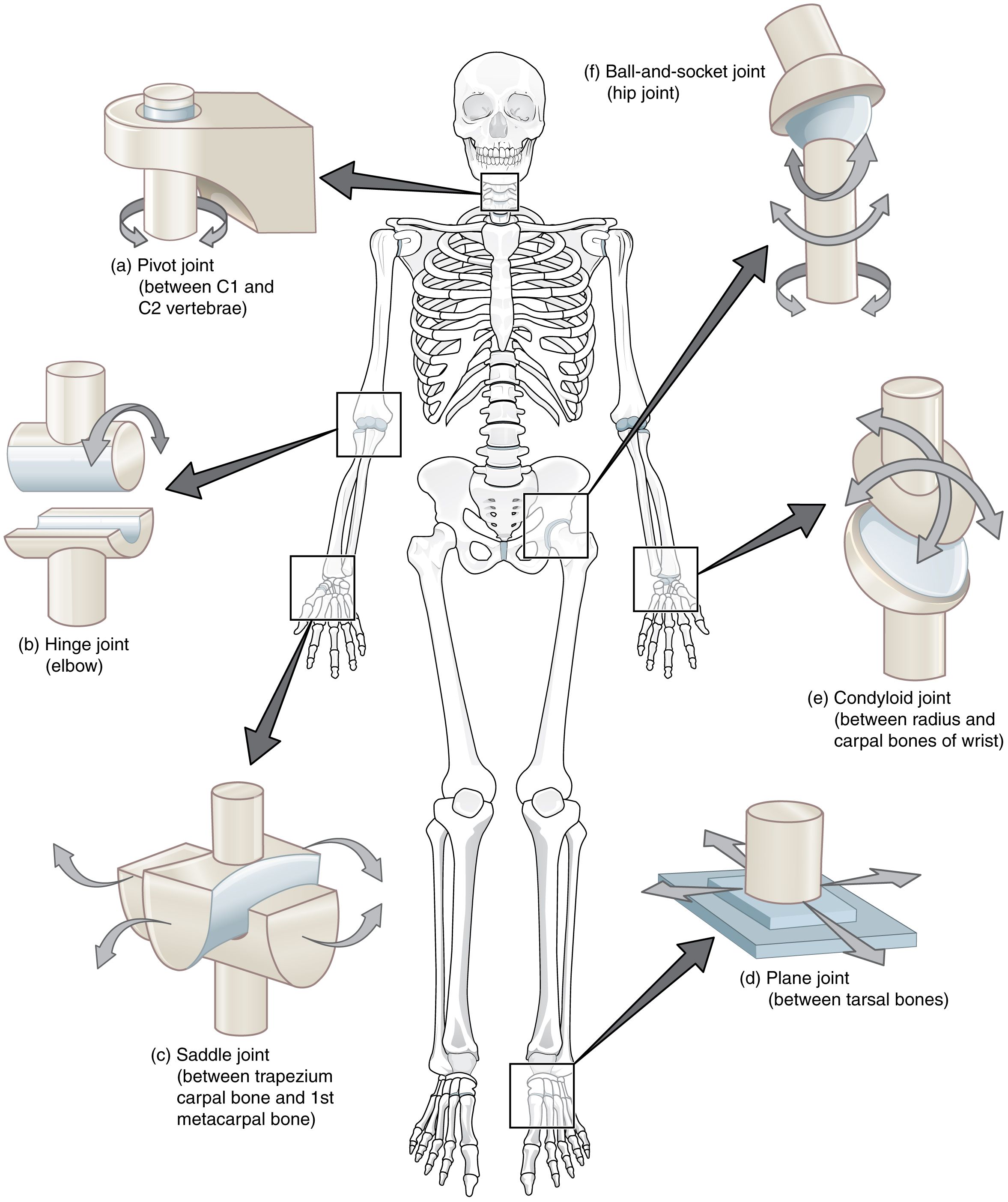
Structure and function of synovial joints HSC PDHPE
Locomotion and Movement - Gliding jointWatch more videos at https://www.tutorialspoint.com/videotutorials/index.htmLecture By: Ms. Saumya sharma, Tutorials P.
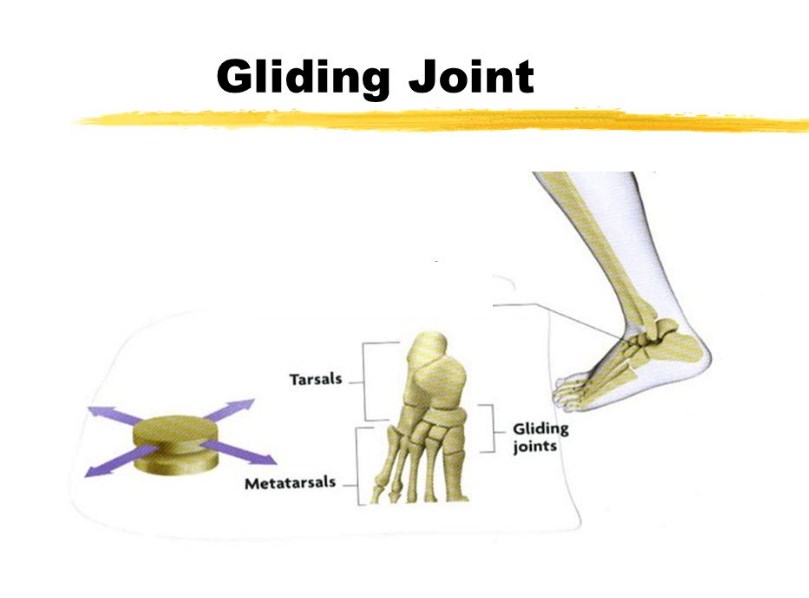
What Is Gliding Joint? Definition, Types, Examples, Uses And Disorders
Anatomical joints may consist of a combination of two or more joint types. Some synovial joints are relatively immobile but stable. Others have multiple degrees of freedom, but at the expense of greater risk of injury. The types of the synovial joints are based on their shapes and can be classified as plane, hinge, pivot, condyloid, saddle, and.
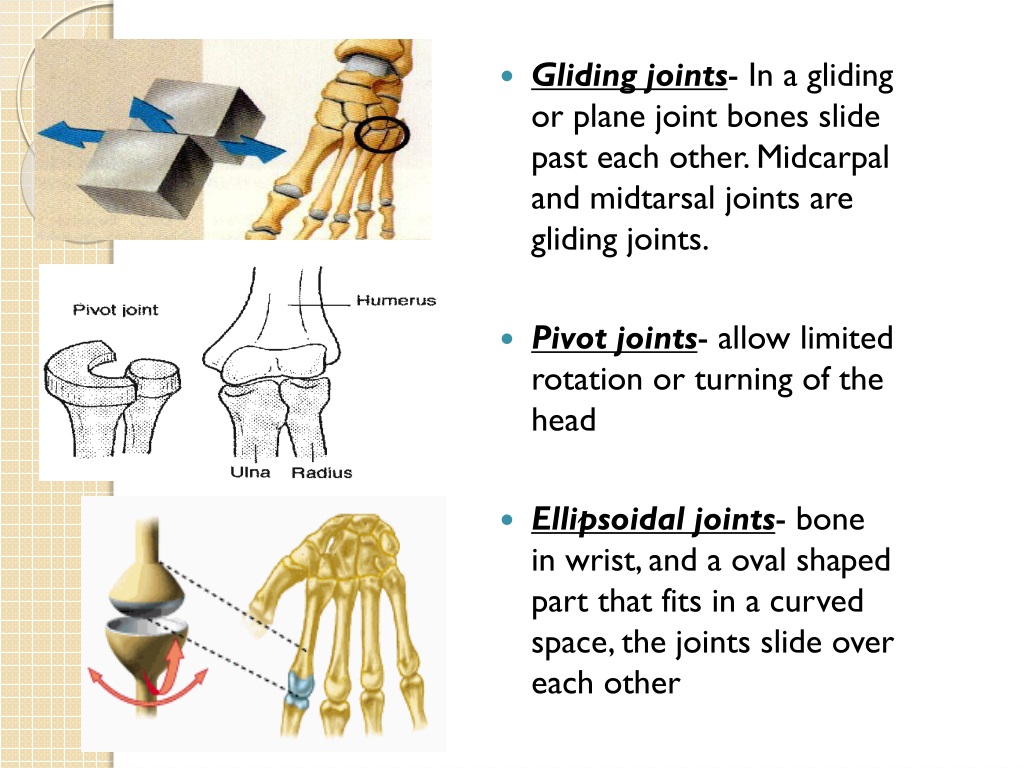
PPT HUMAN MOVEMENT SYSTEM PowerPoint Presentation, free download ID9634762
The ability of the bones to move smoothly against each other within the joint cavity, and the freedom of joint movement this provides, means that each synovial joint is functionally classified as a diarthrosis. Outside of their articulating surfaces, the bones are connected together by ligaments, which are strong bands of fibrous connective tissue.

What Are Gliding Joints? Body and Gliding Joint Movement FIX24
Planar joints, also known as gliding joints or plane joints, form between bones that are flat or nearly flat at the points of contact. The bones can move past each other across the plane of the joint in any direction - up and down, left and right, and diagonally.

What is a Gliding Joint? (with pictures)
Figure 38.11.1 38.11. 1: Angular and rotational movements: Synovial joints give the body many ways in which to move. (a)- (b) Flexion and extension motions are in the sagittal (anterior-posterior) plane of motion. These movements take place at the shoulder, hip, elbow, knee, wrist, metacarpophalangeal, metatarsophalangeal, and.

Joint Scavenger Hunt by Franklin Truax
Plane joints, also known as gliding joints , are a type of synovial joint between flat or near-flat articular surfaces. Movements Under normal conditions plane joints only permit sliding movement in the same plane as the articular surfaces, and do not allow movement in any other plane.
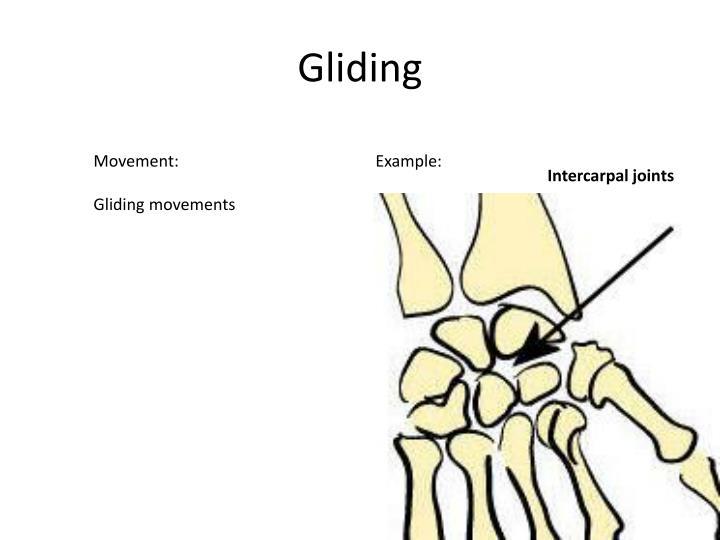
PPT Types of Synovial Joints PowerPoint Presentation ID2504512
1. Joints Can Be Grouped By Their Function into Three Ranges of Motion Immovable joints (called synarthroses) include skull sutures, the articulations between the teeth and the mandible, and the joint found between the first pair of ribs and the sternum.

diagram of gliding joint
Gliding: Gliding is a type of movement that happens once the flat surface of one bone surface slips or glides over that of another. Gliding can be described as a back and forth or side to side motion.. OpenStax, Figure 9.16 Hip Joint: (a) The ball-and-socket joint of the hip is a multiaxial joint that provides both stability and a wide range.

Gliding joint (foot), illustration Stock Image C039/1791 Science Photo Library
Identify the six types of synovial joints. Synovial joints are further classified into six different categories on the basis of the shape and structure of the joint. The shape of the joint affects the type of movement permitted by the joint (Figure 1). These joints can be described as planar, hinge, pivot, condyloid, saddle, or ball-and-socket.
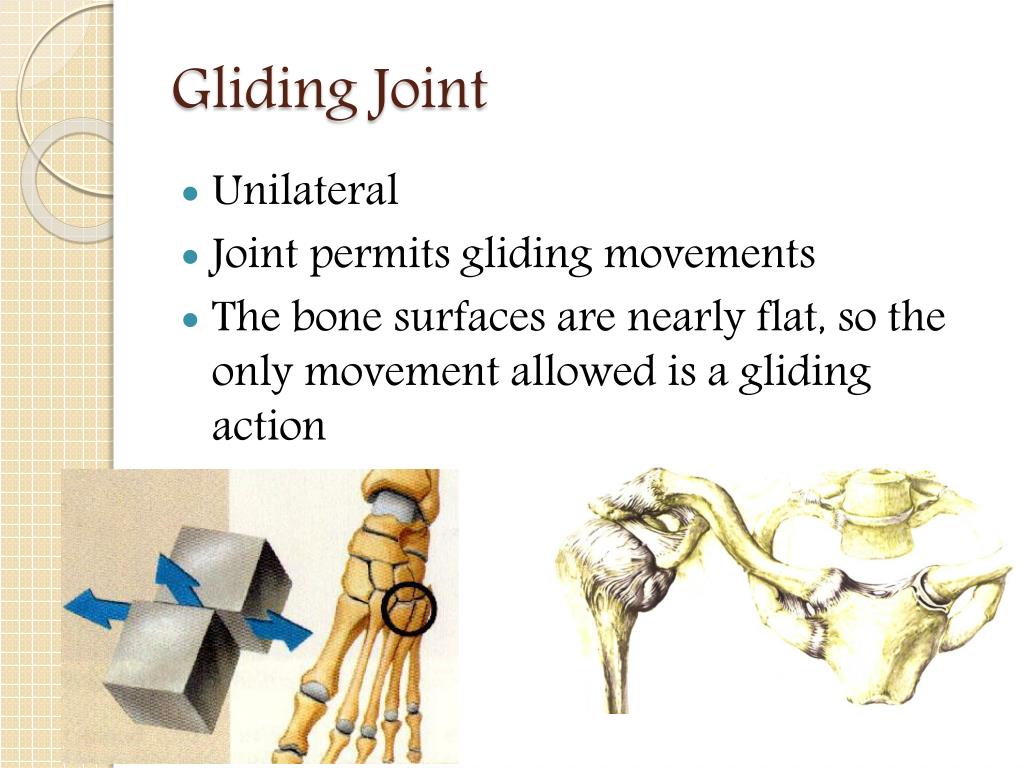
diagram of gliding joint
Gliding is a body movement term in anatomy. What is gliding? Gliding occurs when the surfaces of bones slide past one another in a linear direction, but with.
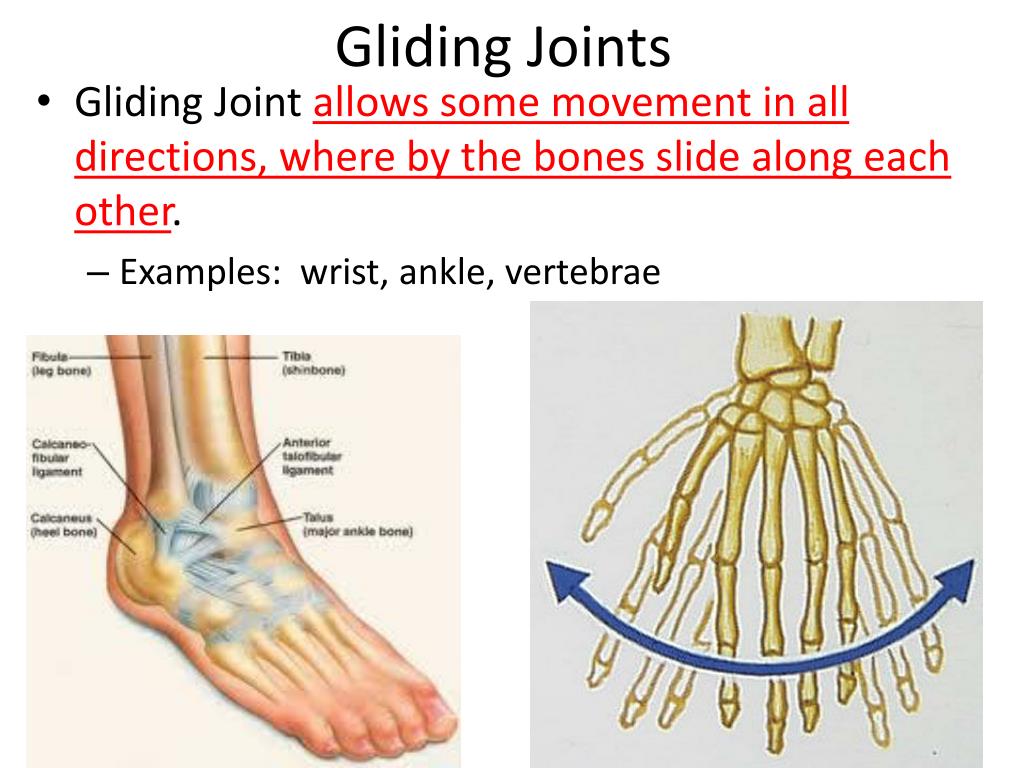
PPT Human Biology Chapter 20 Support and Movement PowerPoint Presentation ID734363
Gliding joints occur between the surfaces of two flat bones that are held together by ligaments.